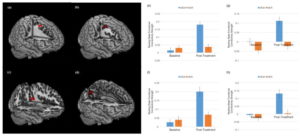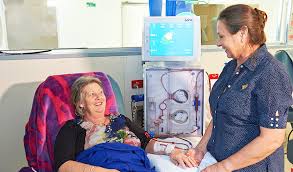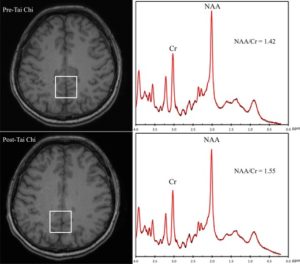Improve Quality of Life with Migraine Headaches with Mindfulness
By John M. de Castro, Ph.D.
“Be mindful of your breathing. If you notice that your respirations are fast and shallow, concentrate on taking slower, deeper and longer breaths. As your breathing slows, your body will begin to relax. Tensions and stress slowly will ebb from your body, allowing you to release the some of the pain and discomfort associated with your headaches.” – National Headache Institute
Migraine headaches are a torment far beyond the suffering of a common headache. It is an intense throbbing pain usually unilateral, focused on only one side of the head and lasts from 4 hours to 3 days. They are actually a collection of neurological symptoms. Migraines often include: visual disturbances, nausea, vomiting, dizziness, extreme sensitivity to sound, light, touch and smell, and tingling or numbness in the extremities or face. Migraines are the 8th most disabling illness in the world. While most sufferers experience attacks once or twice a month, about 4% have chronic daily headaches. Migraines are very disruptive to the sufferer’s personal and work lives as most people are unable to work or function normally when experiencing a migraine.
There is no known cure for migraine headaches. Treatments are targeted at managing the symptoms. Prescription and over-the-counter pain relievers are frequently used. There are a number of drug and drug combinations that appear to reduce the frequency of migraine attacks. These vary in effectiveness but unfortunately can have troubling side effects and some are addictive. Behaviorally, relaxation and sleep appear to help lower the frequency of migraines. Mindfulness practices have been shown to reduce stress and improve relaxation. So, they may be useful in preventing migraines. Indeed, it has been shown that mindfulness practice can reduce headache pain.
In today’s Research News article “Mindfulness for female outpatients with chronic primary headaches: an internet-based bibliotherapy.” (See summary below or view the full text of the study at: https://www.ncbi.nlm.nih.gov/pmc/articles/PMC6036307/ ), Tavallaei and colleagues recruited women suffering with migraine headaches and randomly assigned them to receive either an on-line mindfulness training based upon the Mindfulness-Based Stress Reduction (MBSR) program or medical treatment as usual. The mindfulness training program was presented over the internet in 8 weekly sessions and included meditation, body scan, and didactic presentation. The participants were measured before and after treatment for mindfulness, migraine disability, pain, and distress including depression, anxiety, and stress.
They found that in comparison to the baseline and the treatment-as-usual control group that the group who received mindfulness training had significantly lower levels of migraine disability, distress, and pain and significantly higher levels of mindfulness. They found that the reductions in pain were due to changes in the emotional reactions to pain and not the sensory experiences of pain. So, the pain was perceived normally but the women did not react to the sensations emotionally and this resulted in a lower impact of the headache pain.
The results suggest that mindfulness training increases the quality of life and reduces the psychological distress of women with migraine headaches. Similar findings have been reported in other prior research studies. The importance of the present study resides in the presentation of the program over the internet. Presentation over the internet is important as in-person programs are inconvenient and expensive. Presentation over the internet allows for widespread, convenient, and inexpensive distribution of the therapy to affected populations. This makes mindfulness training more readily available to migraine sufferers.
So, improve quality of life with migraine headaches with mindfulness.
“mindfulness has been examined as a treatment for chronic pain and pain-related conditions, finding positive results such as reduction in medication usage, improved physical functioning, and physical-health-related quality of life.” – Monika Tomova
CMCS – Center for Mindfulness and Contemplative Studies
This and other Contemplative Studies posts are also available on Google+ https://plus.google.com/106784388191201299496/posts and on Twitter @MindfulResearch
Study Summary
Tavallaei, V., Rezapour-Mirsaleh, Y., Rezaiemaram, P., & Saadat, S. H. (2018). Mindfulness for female outpatients with chronic primary headaches: an internet-based bibliotherapy. European Journal of Translational Myology, 28(2), 7380. http://doi.org/10.4081/ejtm.2018.7380
Abstract
Our aim was to investigate effectiveness of mindfulness by bibliotherapy on disability, distress, perceived pain and mindfulness in women with tension headaches and migraines. Primary headaches have been of great interest to mental health researchers because of the high prevalence, as well as significant disability and distress in the affected people. Despite the promising results of in-person treatment and some limitations that such interventions may cause, patients may be encountered with problems when using health care services. The present study is a quasi-experimental randomized design with pre-test, post-test, and control group. The study population consisted of 1396 women with migraine headache referring to headache clinic of Baqiyatallah Hospital in Tehran. Of these, 30 patients (including tboh experimental and control group) were selected by objective sampling method and were randomly assigned to the two groups. The experimental group, in addition to medical treatment as usual, was treated for a period of 8 sessions by Mindfulness-based Stress Reduction Internet-based Bibliotherapy, but the control group used only the medical treatment. The sample had no attritions. Data were collected by the four scales of (DASS-21), Migraine Disability Assessment Test (MIDAS), McGill’s Short Form Questionnaire (MPQ-SF), and Mindfulness Inventory (MAAS). We used covariance analysis to analyze the findings in the measured scales. MBSR-IBB treatment had no significant effect on pain sensory dimension (P <0.44), despite improvement of mindfulness (P <0.0001). In contrast, the greatest effect was on the level of disability (P <0.0001). We observed also a significant improvement in distress (P <0.0001). In conclusion, in spite of the presence of headaches, the mindfulness improved the quality of life and reduced the level of mental distress. In addition, using the Internet-based bibliotherapy method, these services can be used with easier access, lower cost, and more flexibility.
https://www.ncbi.nlm.nih.gov/pmc/articles/PMC6036307/





